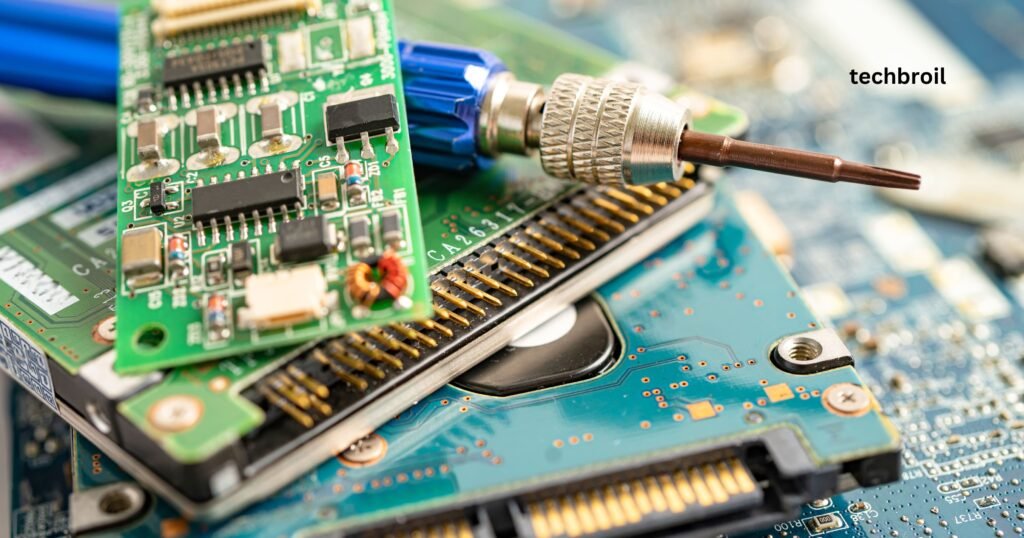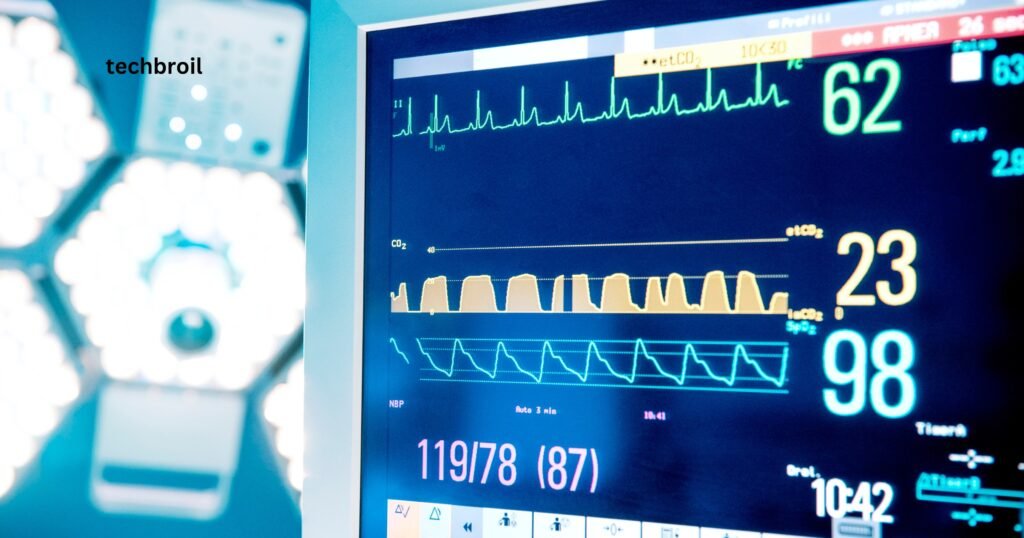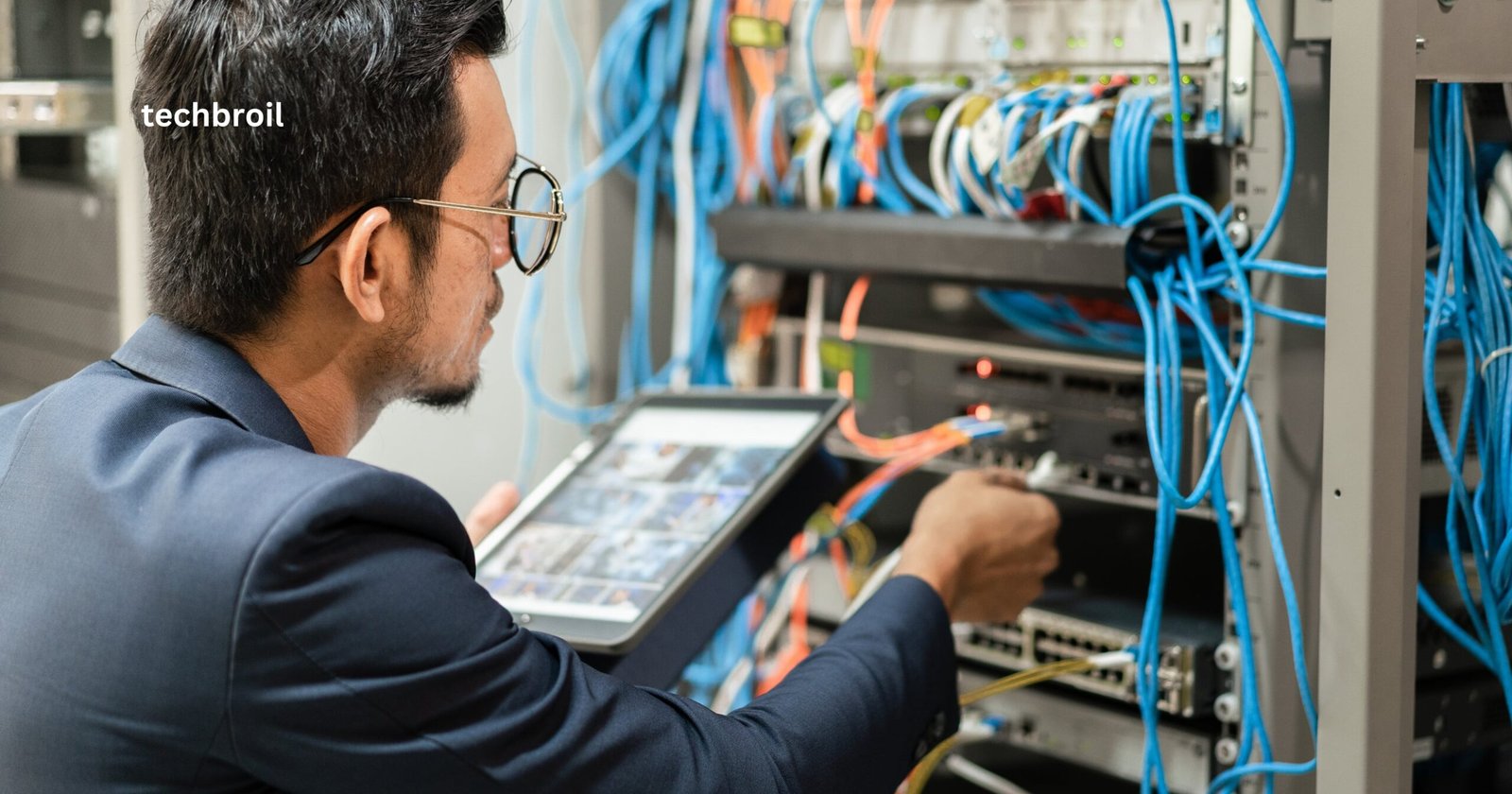Maintaining computer hardware requires several vital steps.
- Computer hardware maintenance is a way of taking
- care of,
- repairing,
- And replacing broken and failing computer hardware.
These steps include regularly cleaning the hardware, checking for any loose components or worn-out parts, and ensuring that all cables are correctly connected.
Additionally, checking your computer’s temperature periodically is essential to ensure it isn’t running too hot.
Keeping an eye on system updates and running regular scans can also help
Introduction
Regular computer hardware maintenance ensures optimal performance, longevity, and system security.
This article outlines the necessary steps to maintain computer hardware to enhance efficiency and reliability.

Regular Cleaning
Dust and debris can accumulate and block airflow, causing your system to overheat. Regular cleaning, therefore, is vital. Use a can of compressed air to remove dust from hard-to-reach areas. Wipe the exterior using a soft, lint-free cloth dampened with a gentle cleaning solution. Always remember to unplug your computer before cleaning.
- Dust and debris can accumulate over time, causing overheating and potential hardware failure.
- Regularly clean the computer’s exterior and interior components using appropriate cleaning tools.
- Keep the operating system and drivers up to date to ensure compatibility, security patches, and improved performance. Set up automatic updates for convenience.

Hardware Inspections
Routine hardware inspections are essential to spot potential issues early. Check for any loose or worn-out components. Listen for unusual noises that could indicate a failing hard drive or fan. Regularly inspect cables for fraying and ensure they are securely connected. Conducting these inspections can prevent significant issues down the line.
- Periodically inspect hardware components such as cables, connectors, fans, and power supply units to check for signs of wear, damage, or loose connections.

Temperature Monitoring
Monitoring the temperature of your computer system is another vital maintenance task. Overheating can cause significant damage, reducing the lifespan of the hardware. Use software utilities to monitor the system’s temperature, ensuring it remains within optimal levels. Adjust your system’s cooling strategy as necessary for efficient operation.
- Use monitoring tools to keep track of the system’s temperature, especially for the CPU and GPU.
- Overheating can cause hardware malfunctions, so take appropriate measures to maintain optimal temperatures.
Hardware Upgrades
As technology evolves, hardware upgrades become necessary for maintaining system performance and compatibility with newer software.
Identify components slowing down your system, like an outdated processor or insufficient RAM, and replace or upgrade them. Always verify that the new hardware is compatible with your system before installation.
- Assess the performance of various hardware components and consider upgrades (e.g., RAM, storage, graphics card) to meet evolving software requirements and enhance overall system speed and capabilities.
Airflow Optimization
Optimizing airflow is integral to maintaining system temperature. Ensure your computer’s fans function correctly and place the system in a well-ventilated area to avoid heat accumulation.
Regularly clean air vents to prevent dust build-up that impedes airflow, thereby reducing chances of overheating.
- Ensure proper airflow within the computer case by organizing cables and maintaining an unobstructed path for air to flow through cooling fans. Adequate airflow prevents overheating.

Power Surge Protection
Power surges can cause severe damage to computer hardware. Therefore, it’s crucial to use surge protectors to mitigate this risk.
They absorb excess electrical energy during a power surge, protecting your system’s components. Regularly check and replace your surge protectors, which can wear out over time.
- Use surge protectors or uninterruptible power supply (UPS) systems to safeguard hardware from power surges and outages, which can potentially damage sensitive components.
Check for Malware and Viruses
Malware and viruses can negatively affect system performance and compromise security. Regularly run antivirus scans and keep your security software up-to-date to protect against malicious software.
These measures help identify and eliminate threats, ensuring your hardware’s smooth operation.
- Conduct regular scans using antivirus software to detect and remove any malware or viruses that could harm the system’s performance and security.
User Education and Best Practices
User education is vital in maintaining optimal system performance. Users should be aware of proper shutdown procedures, potential signs of hardware failure, and the importance of regular system updates.
Adherence to best practices, like not eating or drinking near the computer, can prevent avoidable hardware issues.
- Educate users about safe hardware handling, such as avoiding physical shocks or spills, and emphasize proper shutdown procedures to prevent potential hardware damage.
Conclusion
Which of the following is a necessary step in maintaining computer hardware? Maintaining computer hardware involves regular cleaning, inspections, temperature monitoring, upgrades, airflow optimization, surge protection, and user education. Each step is crucial for the system’s longevity, performance, and security.
By following these essential steps for maintaining computer hardware, users can prolong the lifespan of their systems, minimize the risk of hardware failures, and optimize overall performance. Regular maintenance is a proactive approach to ensure a smooth and efficient computing experience.
FAQs
Why is Regular Maintenance of Computer Hardware Important?
Regular computer hardware maintenance is crucial for sustaining optimal performance, preventing system failures, ensuring security, enhancing longevity, and avoiding costly repairs or replacements.
Regular maintenance ensures that computer hardware functions optimally, extends lifespan, prevents costly breakdowns, and enhances overall system performance and reliability.
How Often Should I Clean My Computer’s Hardware?
Cleaning your computer hardware every 3-6 months is a good practice, but the frequency may vary based on your environment.
Dust accumulation and cleanliness play a vital role in the system’s health.
What Tools Should I Use for Cleaning Computer Hardware?
Use compressed air cans to clean dust, lint-free cloths for wiping surfaces, and appropriate cleaning solutions for stubborn stains. Avoid using harsh chemicals that can damage the hardware.
How Do I Monitor My Computer’s Temperature?
To monitor hardware temperatures, you can use software like SpeedFan, HWMonitor, or manufacturer-specific tools.
These tools provide real-time temperature readings and alerts.
Is it Necessary to Update Drivers and the Operating System Regularly?
Yes, updating drivers and the operating system is crucial. Updates often contain security patches, bug fixes, performance improvements, and compatibility enhancements necessary for smooth operations.









